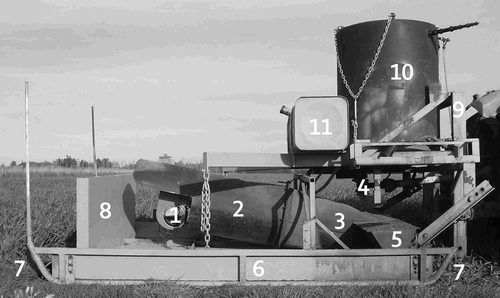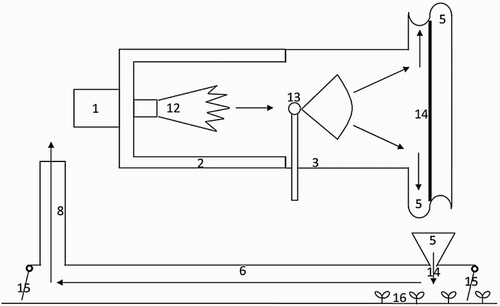Figures & data
Figure 1. Prototype direct-fired steam weeder (Merfield et al. Citation2009). Parts: (1) Ecoflam burner, (2) combustion chamber, (3) water injection duct, (4) water pump, (5) steam distribution duct, (6) hood, (7) front and rear skids, (8) chimney, (9) tool frame, (10) water tank, (11) diesel tank. The electrical generator is not visible as it is on the far side of the water tank.

Figure 2. Schematic diagram of the direct-fired steam weeder boiler and steam application system (Merfield et al. Citation2009). Top, plan view of direct-fired steam boiler; bottom, side view of steam distribution duct and hood, aligned with the plan view. Parts: numbering is consistent with , (1) Ecoflam burner, (2) combustion chamber with ceramic wool insulation, (3) water injection duct, (5) steam distribution duct, (6) hood, (8) chimney, (12) flame from burner, (13) water nozzle and water spray, (14) slot in bottom of steam distribution duct, (15) flaps, (16) soil surface and weed seedlings. Arrows indicate direction of hot gas and steam mixture. Steam is created by the hot gasses produced by the burner (1 and 12) vaporising the fine spray of water from the water nozzle (13), which are then carried by the flow of gas from the burner to the steam distribution duct (5, both diagrams), through the slot in the bottom of the duct (14) to the underneath of the hood (6) where it heats the weeds, before exiting via the chimney (8). Flaps (15) at the front and rear are to reduce the amount of wind blowing under the hood and increase steam retention.

Figure 3. The Lincoln University flame weeder (de Rooy Citation1992).

